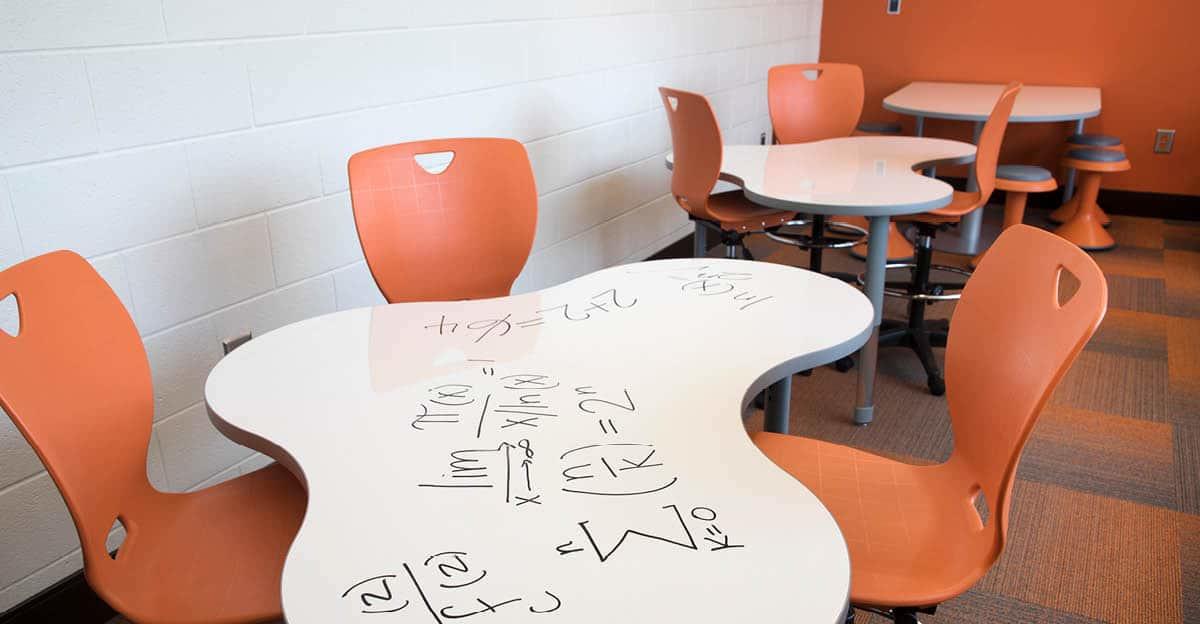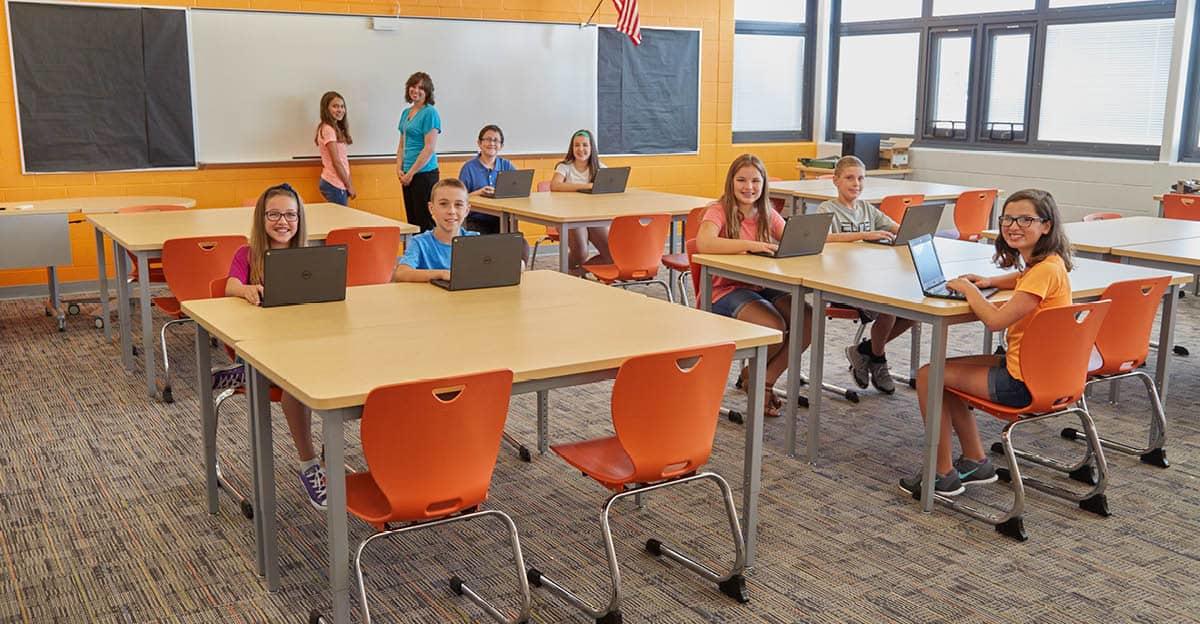The design of a learning space plays a critical role in supporting—or hindering—active learning, which has been shown to improve student outcomes. Arranging student desks in traditional rows facing the front of the classroom isn’t conducive to active learning; instead, students need space to move around, and they need opportunities to interact and work together in small groups.
As you think about how to design classroom spaces that can effectively support active learning, here are three key elements to guide you.
Flexible learning spaces
The learning space must be flexible enough to accommodate a wide range of educational activities.
There will be times when the teacher will want to deliver whole-group instruction to the entire class, such as when introducing new content; in these cases, seating should be arranged so that every student has a clear line of sight to the presentation at the front of the classroom. At other times, students will be engaged in hands-on, active learning strategies, such as small group projects or discussions—and they’ll need opportunities to work in close proximity to each other.
Learning spaces can be designed to support a variety of activities through the use of separate learning zones for each type of activity, and/or moveable furniture that can be arranged in various configurations. For example, tables and chairs that are on casters can easily be moved around the room to create agile learning spaces, and tables that fit together in multiple configurations—such as groups of three, four, or five—can support flexible group sizes for collaborative work.
When learning spaces are designed with flexibility in mind, teachers and students can easily set up the room (or move from zone to zone) to support whatever activity they will be engaging in that day.
Opportunities for movement
To facilitate student movement, classrooms should include plenty of open spaces, such as wide walkways between desks and tables. When furniture is on casters, it can be moved around easily to create wide-open spaces that can accommodate larger group activities.
Also, consider using furniture that allows for movement as students are working, such as stools and chairs that enable them to rock gently back and forth, stand-up desks and workstations that allow them to stretch their legs, and even treadmill desks that allow students to walk as they read or study.
Offering students a variety of seating options, including both traditional chairs and movement seating, lets them choose how they will be most comfortable—and therefore effective—as they learn.

Tools to support student inquiry and collaboration
As students research topics, brainstorm ideas, generate questions, collaborate with their peers, and develop products that demonstrate their learning, they need appropriate tools to support these activities.
These tools can be as simple as dry-erase surfaces for them to jot down their thoughts, or more complex tools such as digital devices, shared interactive screens, and online collaborative workspaces.
When you’re designing learning spaces, think about how you’ll make these tools easily accessible to students throughout the room. For instance, you can buy classroom desks and tables with dry-erase surfaces for students to write on, or shelving and other furniture with built-in whiteboard surfaces that give students plenty of spaces to record their ideas.
If students will be using digital tools, consider choosing desks and tables with built-in power supplies and connectivity ports for students to plug in and charge their devices wherever they might be working, so their work can continue uninterrupted by a dying battery.
Learn more about the critical connection between active learning and classroom design.






Leave a Reply